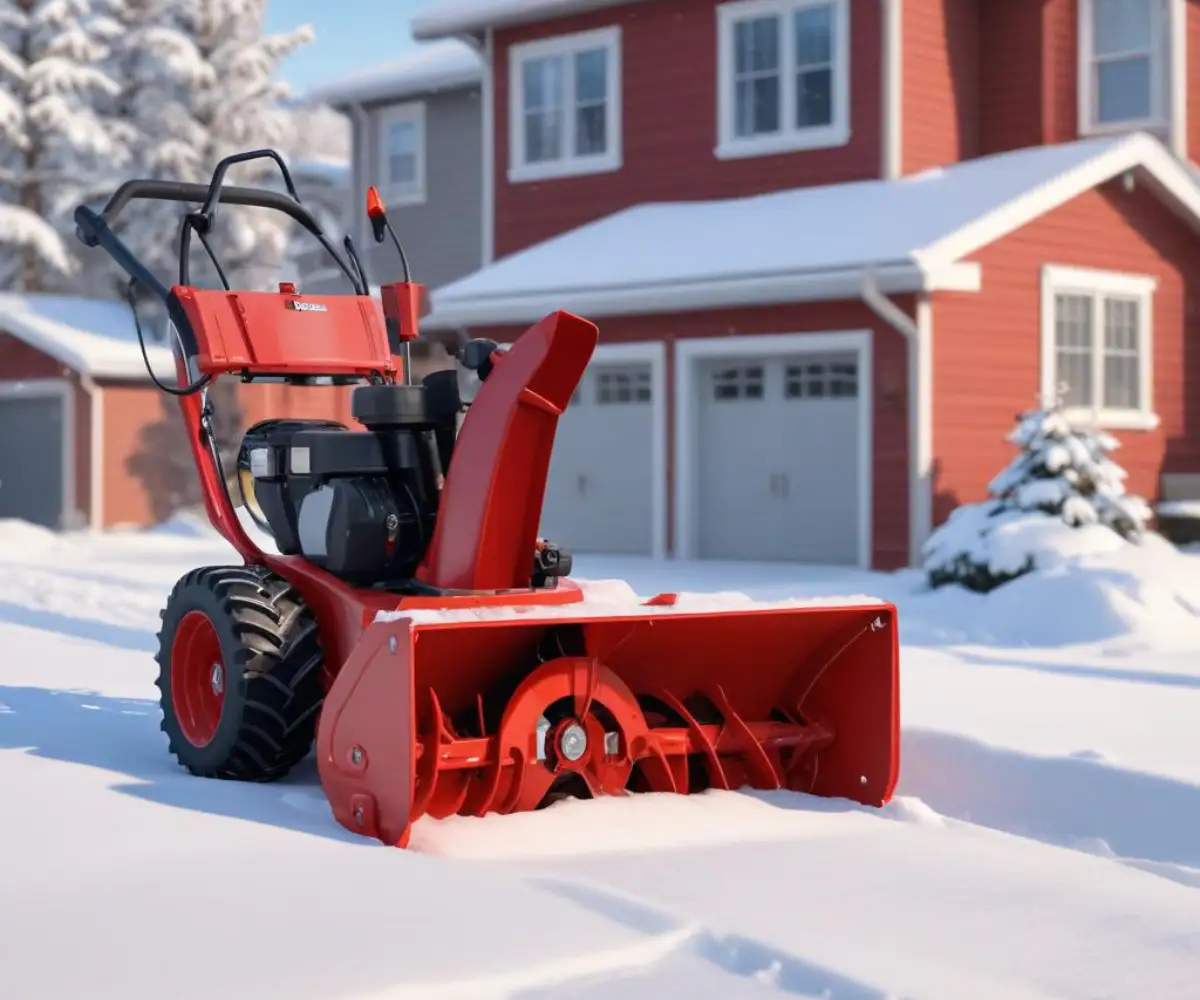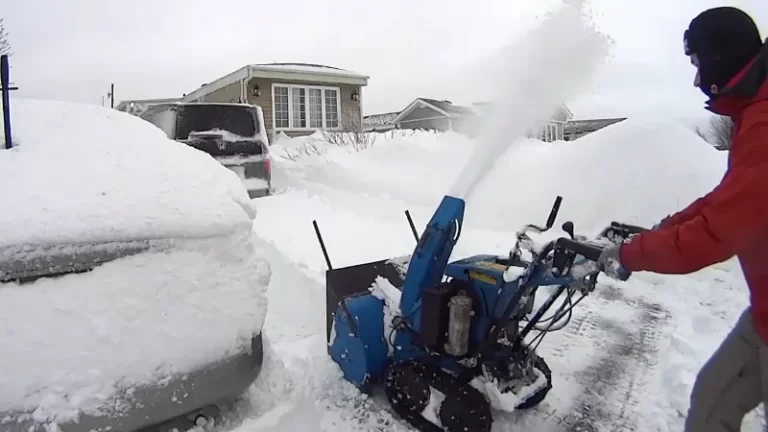Snow Blower Brands to Avoid This Winter: Don’t Buy These Nightmares
A snow blower can be a winter lifesaver, transforming a back-breaking chore into a quick task. But a bad purchase can lead to endless frustration, costly repairs, and a machine that quits in the middle of a blizzard. Making the right choice is critical.
The market is flooded with options, and not all are created equal. This guide cuts through the marketing noise to reveal which snow blower brands and models often fall short, helping you avoid a purchase you’ll regret.
You'll Learn About
What Truly Makes a Snow Blower Brand “One to Avoid”?
Before naming specific brands, it’s essential to understand the warning signs of a low-quality machine. A brand consistently lands on an “avoid” list not because of a single bad model, but due to a pattern of issues that plague their product line.
Key red flags include the rampant use of cheap materials, unreliable engines from unknown manufacturers, and a near-total lack of customer support or available replacement parts. These problems signal a brand that prioritizes low prices over long-term performance and reliability.
The Red Flags of Build Quality
One of the most telling signs of a poorly made snow blower is the excessive use of plastic in critical components. While plastic has its place, it becomes a major liability in freezing temperatures. Pay close attention to the chute and auger housing; flimsy plastic in these areas is prone to cracking and breaking, especially when dealing with icy or heavy snow.
Thin-gauge metal is another major concern. If the housing feels weak or flexes easily, it’s unlikely to withstand the rigors of heavy use. This can lead to the entire frame warping or cracking over time.
The List: Brands That Frequently Raise Concerns
Based on extensive user reviews, repair technician feedback, and forum discussions, several brands consistently appear as ones to approach with caution. These brands often compete on price, but the initial savings can be quickly erased by repair costs and poor performance.
PowerSmart: A Case of Getting What You Pay For
PowerSmart is a brand that frequently appears in discussions about snow blowers to avoid. While the low price point is tempting, users often report a frustrating experience from day one. Common complaints include parts arriving broken or missing, and difficult assembly due to poor instructions.
Performance issues are also rampant, with many users noting that these machines struggle with anything more than light, fluffy snow. The engines are often cited as unreliable, and a lack of available parts can make even minor repairs a significant headache.
Yard Machines and Other Low-End MTD Products
Yard Machines, often manufactured by MTD, is another brand that occupies the lower end of the market. While MTD produces a wide range of products, their budget-friendly lines are often flagged for reliability issues. These snow blowers are known for using thinner metal that can rust and rot out, and controls made from cheap plastic that break easily.
Frequent problems reported include issues with the auger not turning and the machine failing to start. Finding specific replacement parts for these models can also be a challenge, leading many owners to simply scrap the machine when it breaks.

The “Store Brand” Dilemma
Many big-box retailers offer their own exclusive brands of snow blowers. While some of these can be decent machines, many are simply re-branded versions of low-quality models from other manufacturers. The biggest issue with these “store brands” is often the lack of long-term support.
When a problem arises, finding a qualified service center or the correct replacement parts can be nearly impossible. This leaves owners with a machine that is essentially disposable once it breaks down.
Beyond the Brand: Critical Flaws to Spot on ANY Snow Blower
Even reputable brands can produce a dud model. It’s crucial to learn how to identify the specific design and component flaws that signal a poorly made machine, regardless of the name on the housing. This knowledge empowers you to make a smarter purchase.
The Plastic Chute and Deflector Trap
One of the most common cost-cutting measures is the use of an all-plastic discharge chute. While some high-quality plastics can be durable, many cheaper models use brittle plastic that simply can’t handle the cold. An impact from a chunk of ice or even the stress of freezing temperatures can cause it to crack, rendering it useless.
Always look for a machine with a steel chute. This is a clear indicator that the manufacturer has invested in durability where it matters most. A steel chute will not crack in the cold and can withstand the impact of ice and debris without issue.
Unbranded Engines: The Heart of the Problem
The engine is the most critical component of any gas-powered snow blower. Reputable brands will proudly display the name of the engine manufacturer, such as Briggs & Stratton, Honda, or LCT. If the engine is an unbranded “clone,” it’s a major red flag.
These generic engines often have questionable quality control and are notoriously difficult to service. If your Craftsman snowblower has no spark, you can typically find parts and repair guides easily. For a no-name engine, you might be completely out of luck, turning a simple fix into a machine-ending problem.
Sealed Gearboxes: Designed for Failure
A less obvious but equally critical component is the auger gearbox. On high-quality machines, this gearbox is serviceable, with a grease fitting (zerk) that allows you to lubricate the internal gears. Cheaper models often use a sealed gearbox that cannot be maintained.
These sealed units are a ticking time bomb. Once the factory grease breaks down, the gears will wear out and fail. Since the unit cannot be opened or serviced, the only solution is a costly replacement of the entire gearbox, which can often exceed the value of the machine.
Spotting Quality: A Quick Comparison Table
Use this table to quickly assess the quality of a snow blower you’re considering. The more “Green Flags” you can check off, the better your long-term experience is likely to be.
| Feature | Red Flag (Avoid) | Green Flag (Look For) |
|---|---|---|
| Chute Material | All-plastic chute and deflector | Steel chute and deflector |
| Engine | Unbranded, generic “clone” engine | Reputable brand (Briggs & Stratton, Honda, LCT) |
| Auger Gearbox | Sealed, non-serviceable unit | Cast-iron case with a grease fitting |
| Controls | Flimsy plastic levers and knobs | Steel linkages and sturdy controls |
| Tires | Hard, plastic-like tires with poor tread | Air-filled rubber tires with aggressive tread |
| Parts Availability | Difficult to find parts diagrams or suppliers | Readily available parts online and from dealers |
Smarter Alternatives: What to Look For Instead
Instead of focusing solely on the lowest price, prioritize brands known for reliability and durability. Brands like Ariens, Toro, and Cub Cadet consistently receive positive reviews for their robust construction and dependable performance.
These brands typically use higher-quality components, such as steel chutes and reputable engines. While the initial investment may be higher, the longer lifespan and reduced need for repairs often make them a more economical choice in the long run. When comparing options, an Ariens vs Cub Cadet snow blower analysis can reveal key differences in features and build quality that justify the price.
Your Final Pre-Purchase Checklist
Before you make a final decision, run through this checklist to ensure you’re not overlooking any critical details. Taking a few extra minutes to inspect the machine can save you years of frustration.
- Check the Build Materials: Tap on the auger housing and chute. Does it feel solid? Look for steel components in high-stress areas.
- Identify the Engine: Is it a well-known brand? A reputable engine is a strong indicator of overall quality.
- Examine the Controls: Work the levers and knobs. Do they feel sturdy and responsive, or flimsy and likely to break?
- Look for Serviceability: Can you easily access the oil drain, spark plug, and belts? Is there a grease fitting on the auger gearbox?
- Read Recent Reviews: Look for reviews from the last year or two to ensure the brand’s quality hasn’t declined.
Conclusion: A Smart Investment Prevents Winter Headaches
Choosing a snow blower is a significant investment, and opting for the cheapest model available is often a recipe for disaster. Brands that cut corners with plastic components, unproven engines, and poor build quality will inevitably lead to frustration and costly repairs.
By learning to spot the red flags of a low-quality machine and focusing on brands with a proven track record of reliability, you can purchase a snow blower that will serve you well for many winters to come. A little research now will save you from a major headache when the snow starts to fall.

